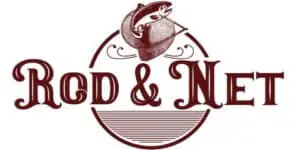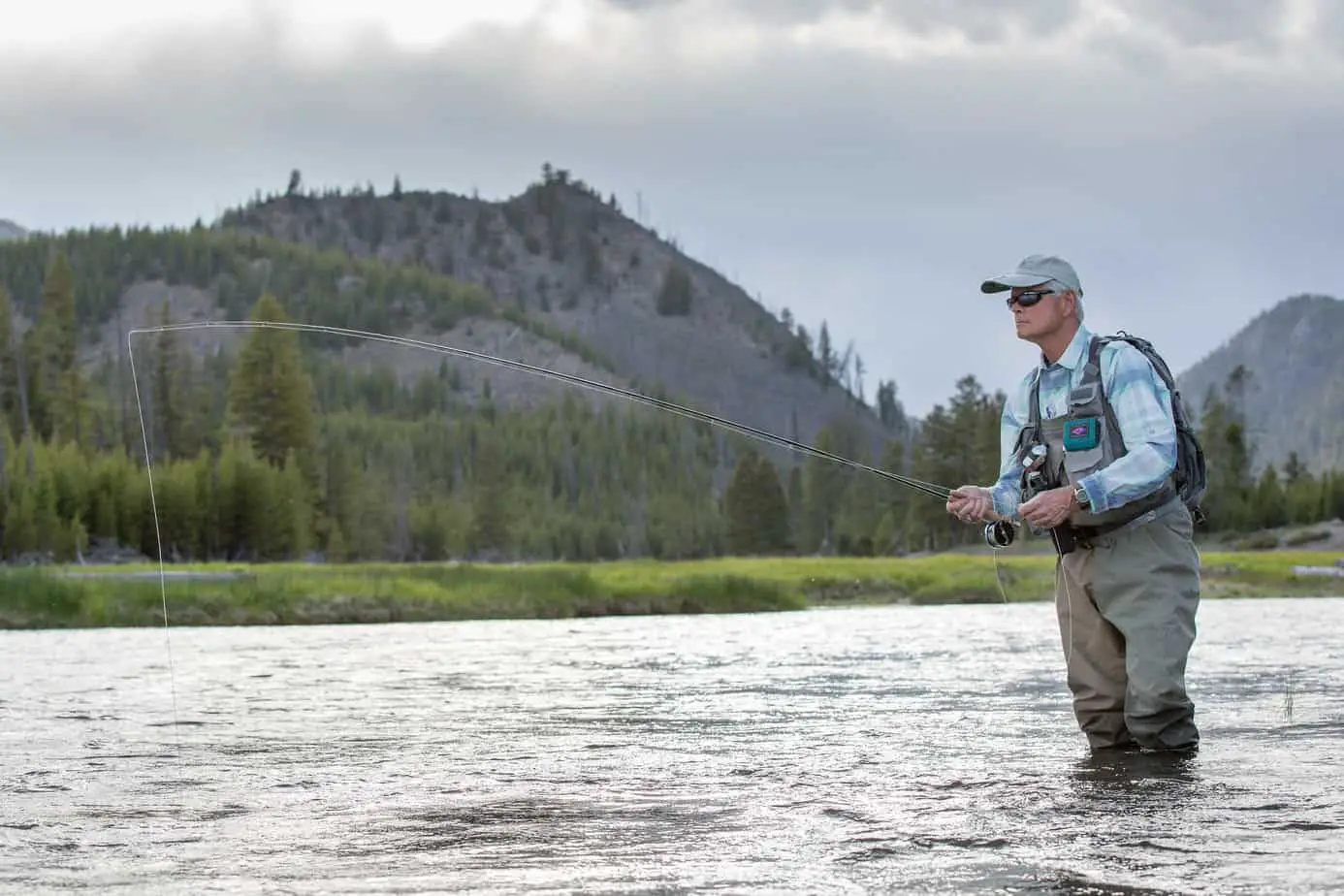Fly fishing can feel like the most technical of all types of fishing. Everyone assumes it requires a lot of expensive equipment to get started.
In this article, we discuss what is needed to get you started and the necessary costs involved.
Starting Fly Fishing Equipment
Getting started with fly fishing doesn’t need to cost a lot.
Starting as a fly fisher and knowing what fly fishing gear for beginners is required can be quite daunting.
You can purchase a starter set of fly fishing gear for beginners for around $250. We have created a list of starting fly fishing equipment to consider.
- Fly Rod
- Reel
- Fly line and backing line
- Fly box and Flies
- Footwear (waders or similar)
- Vest and or bag
- Landing net
- Tippet and Leader
- Forceps and Snippers
- Polarized Sunglasses
The equipment listed above is by no means comprehensive, but it is certainly enough to get a fly fishing beginner started. We shall break it down into a bit more detail below.
Fly Rod
Your fly rod is one of the most crucial pieces of equipment you will require. A good fly rod can be pricey, in some instances running to thousands of dollars.
However, there is no need for a beginner to spend that much money. Equally, some very affordable fly rod kits available, like this one from Amazon.
For a good fly rod suitable for beginners, decent well-made rods with an excellent mid-range action*, like this one from Pascifun.
It would be unlikely for beginners that you would ever want to pay more than about $200 on your first rod.
But if you’re going to get one of the best rods out there to start with, check out the Drifter Series by Moonshine Rod Co. on Amazon.
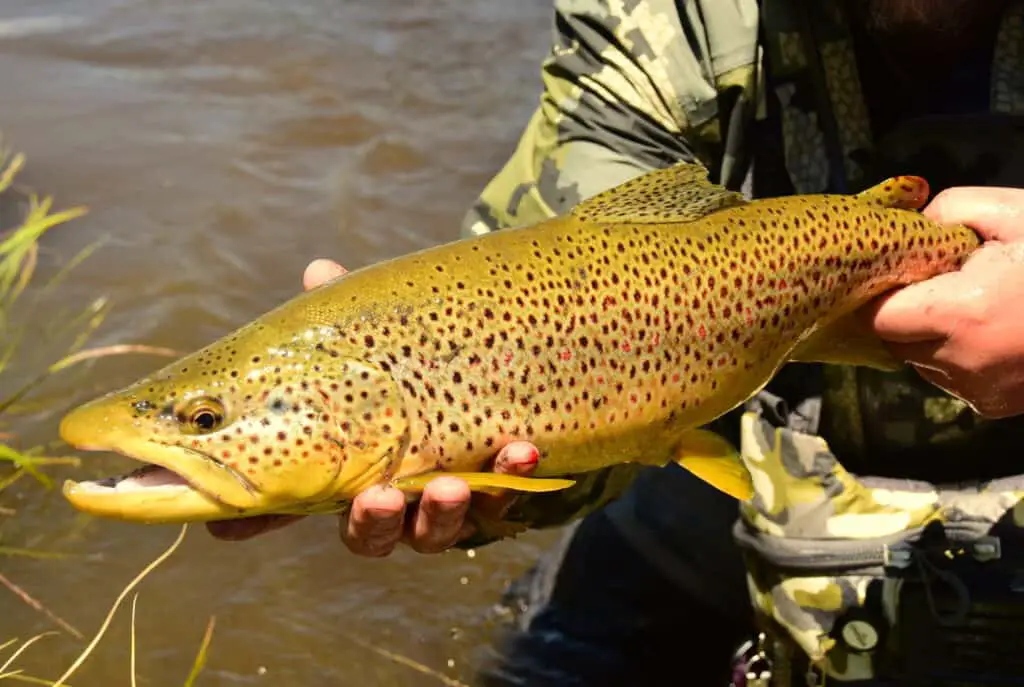
*The rod’s action could be thought of as its “springiness” some anglers prefer a stiff action while others like a softer action. This is one reason spending a lot of money on that first fly rod is not recommended.
Fly Reel
The fly reel is attached to the rod handle and is used to store the fly line and backing line. Unlike other fishing styles, it is normal for the line to be pulled from the reel before starting to fly fish.
Therefore, fly reels can be a simple and inexpensive piece of equipment.
There are a couple of feature considerations when buying a reel.
- A good drag system (to slow that monster fish)
- Interchangeable spools (to allow quick changes of the fly line)
The cost of a good beginner’s reel should be inexpensive, but the cost may vary a bit. There would never be any need for a beginner to spend more than $150 on a starter reel.
Fly And Backing Line
Unlike other fishing styles that generally use a monofilament line, a fly line is a far more integral part of the process. Before we look at the fly line, let’s just touch on the backing line.
The backing line attaches to the reel’s spool and fills it up to the point where there is only enough room left on the spool to accommodate the fly line. A filler exists to ensure the fly line isn’t coiled around the spool’s center and hence coiled too tightly.
The backing line also acts as a running line when you hook into that monster fish!
The fly line itself comes in many variations, and over time you will likely carry many of them with you (hence interchangeable spools on your reel). The fly line is the part of your fly fishing kit that allows you to cast your flies through your casting action and the rod’s spring.
Some types of line are listed below.
- Floating
- Sinking
- Sinking Tip
- High density
The taper of a fly line refers to where the line is weighted:
- Weight forward
- Level
- Double taper (heavy in the middle)
Most beginners should start with a ‘floating line’ with a ‘weight forward taper.’
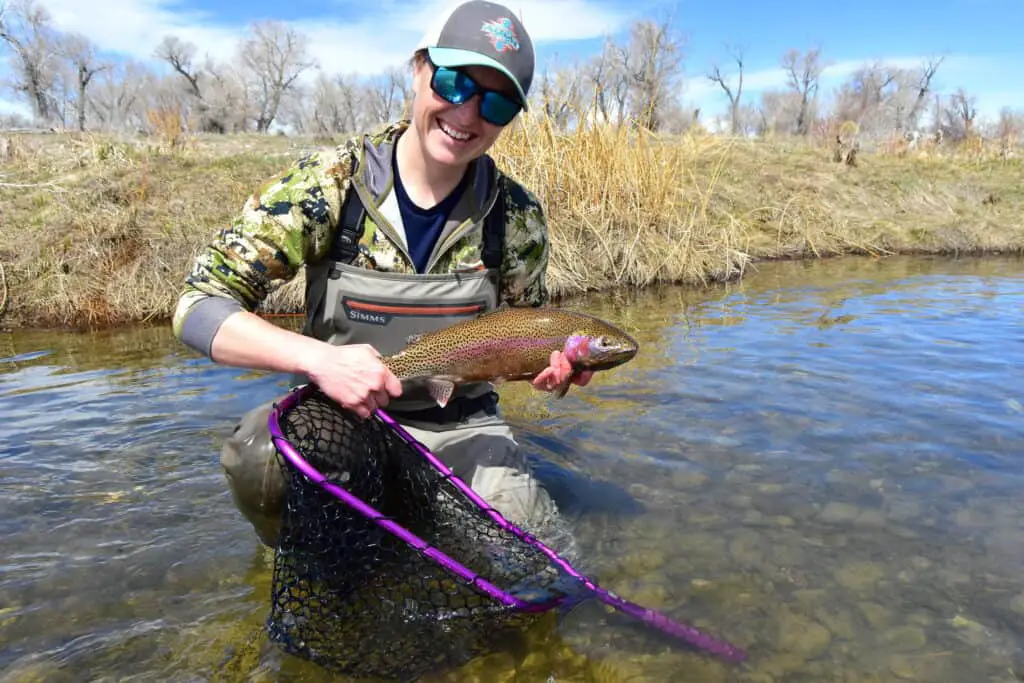
The fly line and the rod will have a weight associated with it; for instance, it may be graded as a ‘weight forward 6’. Your fly rod will be graded with the weight of fly lines it is designed to accommodate. Hence if you have a rod graded 5-7, then a floating line that is rated within this range is the perfect starter line.
The backing line cost should never be more than $15 – $25, whereas a fly line would cost between $20 and $70.
Fly Box And Flies
Over the years, you will likely build up an extensive collection of both these items. It goes with the territory. However, to get started, a few dozen flies and a single box would be fine.
The flies themselves are used to attract the fish. Effectively they are the bait. They are tied to imitate aquatic and fly life and come in a mind-boggling range of patterns, sizes, and categories.
It simply isn’t possible for a beginner, or any fly fisher for that matter, to carry around all the variations and types. The trick is to choose a few dozen that will cover most circumstances. You can build your collection as your hobby progresses.
A few categories of flies are:
- Dry flies: these sit on the surface of the water and attract fish that are surface feeding
- Wet flies: usually fished just below the surface
- Nymphs: typically weighed, these can be fished at depth and represent the ‘nymph’ stage of an aquatic creature; dragonflies and mayflies are examples of insects with a nymph stage.
- Lures: these can be weighted or not and are usually representative of small fish or fry.
The cost of flies can be considered a running cost but expect to pay $10 upwards to get started with a small set.
The fly box is self-explanatory. It’s a storage box for your flies and consists of a metal, wood, or plastic box with foam or cork inner that allows you to hook your flies into it for safe storage. Expect to pay anywhere from $10 to $50 for this item.
Footwear
At the very least, you will require a decent pair of waterproof boots, but a set of thigh or chest waders could be considered an essential kit.
Waders are essential as they allow you to venture out into the water and allow access to awkward nooks and crannies that are otherwise inaccessible.
Available in rubber, PVC, or neoprene and with a variety of soles, it is likely another item that, over time, you will replace. Here is a good beginner’s set to start with.
Vest and or Bag
One of the things about fly fishing is you need to be mobile; you are effectively searching for the fish. The ability to move quickly to a new spot can be difficult if you are weighed down with boxes of flies, spools with different lines, landing nets, and naturally, a flask of coffee.
A good vest with a multitude of pockets and attachments helps you stay mobile and carry a lot of equipment at the same time. A bag performs the same function.
For most beginners, one or other of the items would likely suffice. Expect to pay $25 to $150 for gear in this category.
Landing Net
Used to land the fish that you catch, this should be light and portable. It usually is an item that will fold, although some ‘tennis-racket’ types are rigid. They will have a halter for carrying or perhaps a hook that will snap onto your vest.
Landing nets are essential pieces of kit if you don’t want to lose a large proportion of the fish you hook. Budget $25 – $75 for a decent net, but pricing can vary.
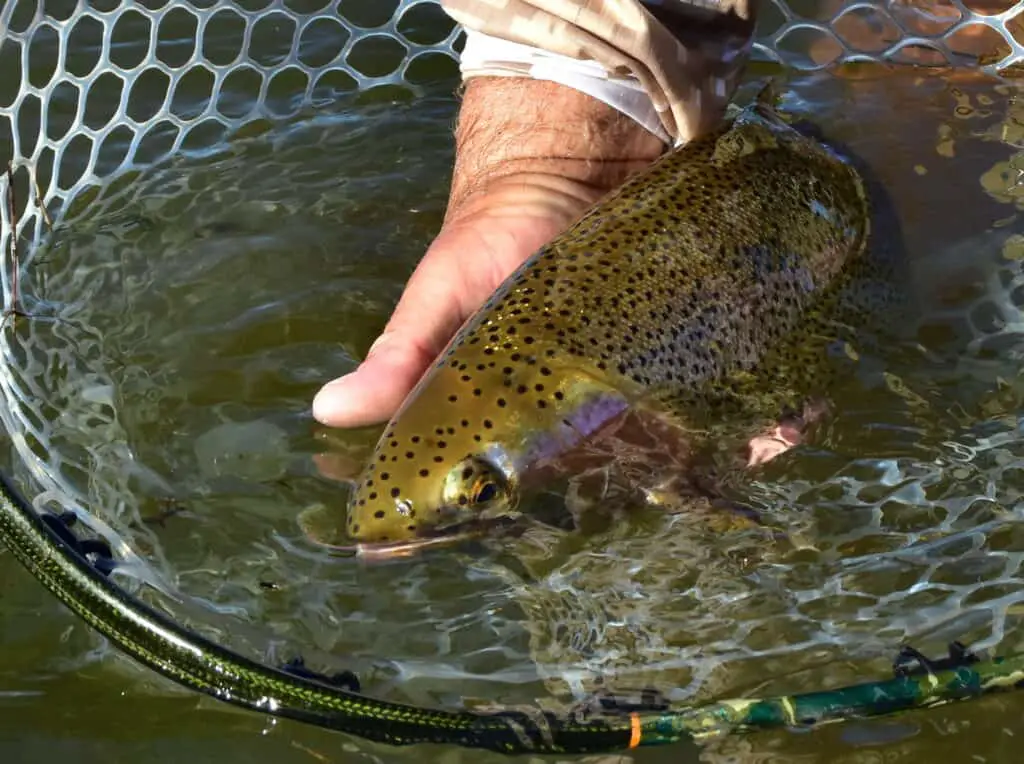
Tippet and Leader
These two items essentially attach to the fly line and make up the business end of your gear. The tippet is a tapered monofilament that attaches to the end of the fly line.
The leader attaches to the tippet and ultimately is what the fly or flies themselves are tied. You will need to carry a few weights of leaders. These can either be purchased pre-made or as spools of monofilament to make your own.
It would also be a good idea to purchase some leader-holders who allow you to carry several leaders without them tangling.
Forceps and Snippers
This section could be called general hardware. As a fly fisher, you will need to carry items to help you cut monofilament, remove hooks from fish, and whatever else comes along.
These are carried on ‘zingers,’ which are small retractable spools attached to your vest. Or have a lanyard attached to which you can hang on your vest.
Polarized Sunglasses
Cutting down the surface glare is essential to help track the fish and keep your eyes from hurting with constant squinting into the glare. Most anglers will wear these on all but the dullest of days.
The sky’s the limit when it comes to polarized sunglasses.
Conclusion
When starting fly fishing, it can all seem quite daunting. There is no need to get over-complicated from the outset. A basic rod and reel, a pair of waders, and some flies and bits and pieces to help will soon have you, and the fish hooked.
Did you know that Orvis offers an Orvis Rewards Visa? Apply Today for Free Standard Shipping, Triple Points and $25 Bonus Rewards. See details.
Organically, over the years, your kit will evolve. Some people keep it light, and others look like they need a truck to carry their gear.
That is why it is best to keep it simple at the beginning. You will find your preferences and decide what specialist kit you need.
Worried that fly fishing is too hard? Read our article, “Is Fly Fishing Difficult?”
This discovery process was one of the hidden joys of fly fishing, and guess what? It never goes away.
But most of all. Have fun!
